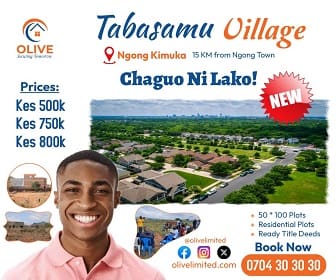In October, Kenya’s Planning Minister Anne Waiguru announced that the country’s Gross Domestic Product is 25 per cent larger than previously thought after it was recalculated using updated statistics. Kenya’s “rebased” GDP is now estimated at $53.3 billion (previously $42.6 billion).
This makes Kenya the ninth-largest economy in Africa and classifies it as a middle-income country. Its gross national income per capita is $1,160, surpassing the World Bank threshold of $1,036 to qualify for the new classification. Kenya’s move to revise its GDP camejust months after Nigeria rebased its GDP in April and became the largest economy on the continent.
Despite this boost, observers say this does not mean that Kenya has overcome its economic challenges: Four in 10 Kenyans live in poverty according to the World Bank, and Kenya still has a considerable way to go to achieve 10 per cent growth annually as outlined in itsVision 2030 Agenda. So much for the technocrats.
As a marketer, one has to be attuned to the nuances of human behaviour in an economy. In themselves these small signs are sometimes of limited commercial significance. But they often point the way to new opportunities. Keeping my eyes wide open in the past week, I’ve noticed some indications towards a change in commercial activity here. To me they confirm an established middle class economy hungry for more.
Billboards are a good ready reckoner of sectoral activity. Regardless of the creative content or quality of message. So now we have an explosion of billboards for the real estate sector. We’ve had office developments booming for years. For some reason rentals don’t seem to have eased, possibly thanks to only one or two big players in commercial property milking the market. But now we have apartment complexes, gated communities, and ambitious developments so peri-urban that they are effectively rural.
Fashion has a big visual presence. We always knew that ladies spent hours every weekend in their favourite salons. But now our flyovers and lampposts are adorned with hair and beauty products in profusion. Wig brands boasting the benefits of human hair over synthetics. Intrinsically a bit sinister, but indicative of an economy where more and more women are active, need to be presentable and demand to be more.
Ten years ago, Vaseline was a fairly exciting brand. Nowadays Nivea’s clear brand promise talks equally to men and women about skin care. And is in fierce competition with a huge personal care brand portfolio that stretches all the way up to L’Oreal.
Eating out, a great many Kenyans have transitioned from nyama choma, through Java Coffee Houses to the rarified atmosphere of the ArtCaffé. Across Kenya, coffee which we used only to bag and export, has become something we savour.
Ten years ago we were all waiting for South African retailers like Pick’n’Pay and ShopRite, but they never came. Now indigenous supermarket brands Uchumi and Nakumatt face the imminent competitive entry of French mega chain Carrefour.
Shopping malls have become the new secular cathedrals, where pilgrims genuflect at Apple and Hugo Boss and take communion with frozen yoghurt and French pastries.
House and home has become a passion. Duracoat and Crown are punting new palettes and textures to sparkle up the most modest estate house. Tile and Carpet Centres are full of ladies buying hectares of curtain material and husbands pondering German bathroom fittings.
For many Kenyans the Boeing 787 Dreamliner is yesterday’s news – even for those who may wait another decade to fly on it. While on the roads we now have European marques like Jaguar, Volkswagen and even Porsche to tempt the ever more upwardly mobile away from their Toyotas. And the Range Rover? Well it’s just like a big bottom. Lot’s of people have one, get over it.
Perhaps the most telling observation came from my wife this weekend as we travelled back from a weekend up country. She spotted a middle class family, in their compact SUV with their children in car seats. After twenty years of following cars with children standing between the two front seats, this truly was a revelation.
Is this purely an urban phenomenon? No. It is mainly an urban movement because that’s where these consumer trends are most accessible. But many a market town has a smart coffee house today – sometimes a copycat of an established brand. Cosmetic and beauty purchases are up countrywide. Satellite TV access is now solar powered for wider distribution. The mitumba phenomenon keeps rural kids in Nike and Adidas. And every day the Android phone opens up new worlds of possibility for the consumer.
So, if you want to understand what a middle-income economy looks like, just open your eyes and think back a handful of years… to we didn’t have then.
Chris Harrison has 30 years experience of marketing and advertising Most of them spent in Africa. He leads the African operations of The Brand Inside, an international company that helps organisations to deliver their brands and strategies through their people. www.thebrandinside.com
-The Star









